- MMA & Combat Sports, Resistance Training
THE IMPORTANCE OF CORE STABILITY IN PERFORMANCE!
- By captdavid1
- On January 22, 2020
Facebook
Twitter
LinkedIn
When it comes to moving weight and i’m talking HEAVY weight you must create proximal stability in order to intiate optimal force production. A loose core under a loaded bar can only equate to a disaster, as an athlete you must learn proper “bracing” mechanics in order to achieve success in the lift! Phil Daru, BS Sports Medicine, Strength Conditioning Coach
For years people have been trying to work their “core” with single leg bosu ball squats, balance board surfing and my personal favorite CRUNCHES.. Those are the same people that cannot squat their own bodyweight. If you ask the top powerlifters, weightlifters, and strongman in the world I guarantee you that they are not at LA Fitness doing a handstand on a stability ball. Dont get me wrong a stability ball and plank exercises have their place but its not the end all be all of a full core stability or bracing strategy to optimize performance. Keys to learning how to properly stabilize the core and brace the spine is 1) learning how to “breath through your diaphragm” aka breath through your balls, 2) contract your transverse abdominal wall “brace like your going to get kicked in the gut”, 3) retract Scapula and Latissimus Dorsi muscles while keeping thoracic from over extension. All major movements especially under heavy load must create stability in order to protect the vertebra from being damaged. This is a skill that must be acquired with not only athletes but ordinary people as well. Learning how to brace while picking your children up or getting up off the toilet can protect you from having problems in the future or possibly injuring yourself through bad biomechanics. Back pain is the single leading cause of disability worldwide according to the Global Burden Of Disease 2010, and is the second reason for most common visits to the doctor’s office. Americans in general spend about $50 billion each year on back pain treatment. What most people dont know is that this can be helped by strengthening the core, and posterior chain through proper bracing with core weightlifting exercises. Now i’m not saying that improper bracing while lifting is the only cause of back pain some are caused by distal trauma that through off mobility creating a change in movement patterns your body became accustom to, but this also brings me back to my original statement with proximal stability comes distal mobility. “Spine power results from force multiplied by velocity. To mitigate risk, spine power must be low. If the load is high, then velocity, or spine movement, must be low.” (Dr. Stuart Mcgill) Doctor of Spine Biomechanics at the University of Waterloo. Now that you have an idea of bracing and proper core stabilization. Im going to link a short video of how to brace while performing a lift or power movement, create an iron sheath around your rib cage and be ready to move weight all while keeping your spine safe and healthy.
https://youtu.be/VcY3YSW9vX4

